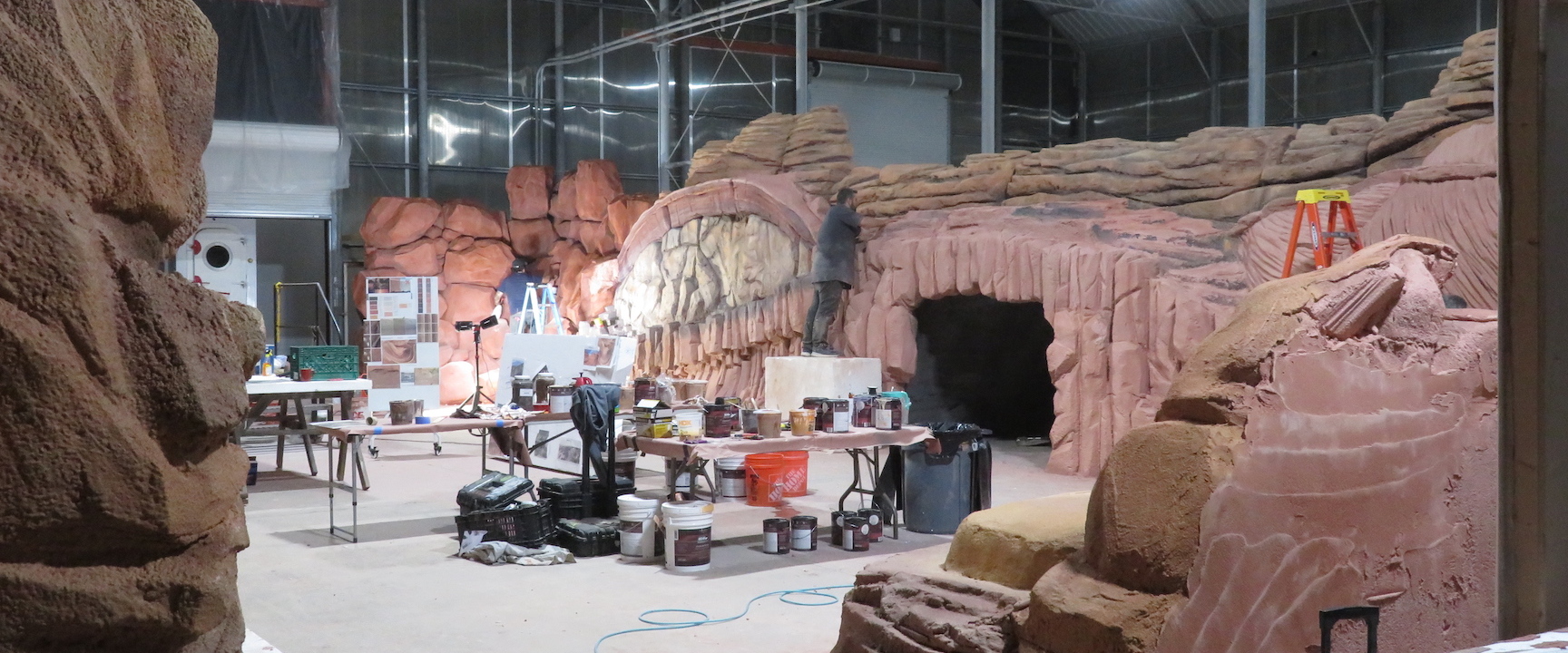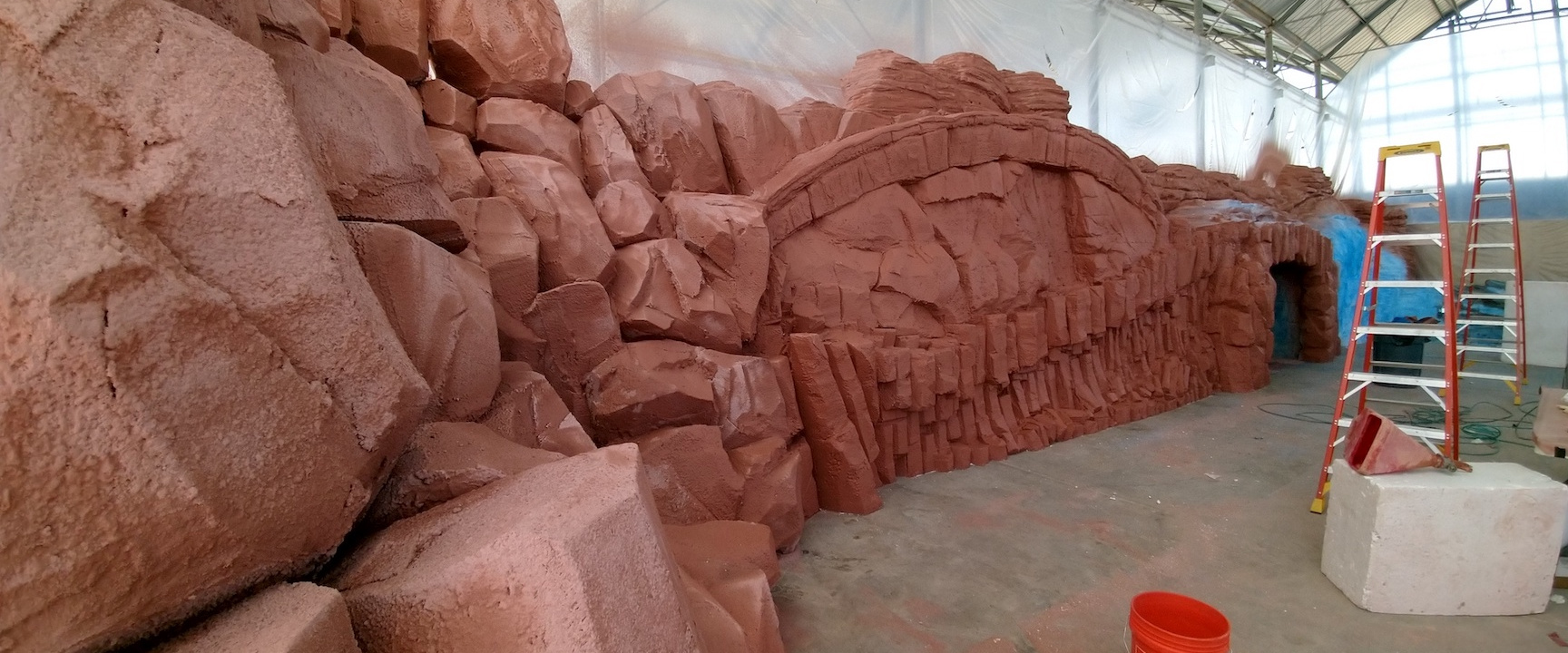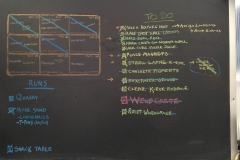Into the summer we go
With the completion of the sculpted Mars yard and third Analog Astronaut Conference hosted by the Biosphere 2, the SAM crew moves into its second summer of continued effort, with a number projects unfolding at the same time. Last year Matthias Beach, Sean Gellenbeck, Tasha Coelho, and Mason Robbins worked June through September to complete renovation of the former Biosphere 2 rain forest greenhouse in preparation for installation of the SAM Mars yard, with an expanded and far more functional workshop for continued fabrication and construction.
Now, Matthias and Luna are completing the replacement of the original polycarbonate with new, darker tinted panels for less total thermal gain. The old panels had become brittle and were broken in many places, some sections blown out from strong, Arizona winds. With the new roof installed in July of 2022, all new wiring and rebuilt west wall in the summer of 2023, this begins the final effort to give this 1980s construct a new purpose for the next decade or two.
When it’s too hot to be on the scissor lift in the Arizona sun, Matthias is working in the SAM lower lung, replacing the original, rigid electrical conduit with Carflex, restoring the 3-way light function, and replacing the original florescent lights with modern LEDs for less power consumption and greater reliability. Luna is assisting Matthias and painting conducting the final scraping, sanding, priming, and painting of the lung walls and pan rim. This is the last, major interior restoration of the original Test Module and lung.
Kai, Matthias, and Luna continue to renovate the SAM Operations Center with the recent installation of a custom built butcher block countertop, sink, microwave, fridge, and more while Luna brings order to the chaos of the storage room following a juggernaut April and May.
Sean and Luna are designing and mid June fabricating the third prototype of the hydroponics rack. Once proved with a full growth cycle, three additional units will be built to complete this phase of bioregeneration capacity building with the ultimate goal of reproducing Linda Leigh’s single crew member, three weeks stay in SAM with all air fully recycled by plants.
We are honored to have Dr. James Knox, a former, career NASA aerospace engineer and principal developer of the CO2 scrubber for the International Space Station now working with us to design a custom scrubber for SAM. This original design and fabrication, lead by Sean, will enable us to engage full mechanical air recycling such that we can move from physico-chemical to bioregeneration in a single mission—the underlying goal for both the SIMOC simulator and the real world SAM research station.
Bindhu is updating the SAM Operations Manual, crew “cuff notes”, and working to establish an umbrella IRB. This is imperative for ability to engage multiple science objectives at SAM that carry data relevant to human related research objectives.
Tasha is working with Kai to develop the foundation for an educational curriculum around the new geologically accurate Mars yard such that primary and secondary school kids might enjoy an hour or a half day at SAM exploring the Mars yard through experiential learning and discovery. The same foundation will also apply to more advanced exploration by SAM crews, drones, and rovers.
Needless to say, we remain engaged!
As with the prior three summers, these photos essays will be reduced in frequency until September or October.
Stay cool! And stay tuned!


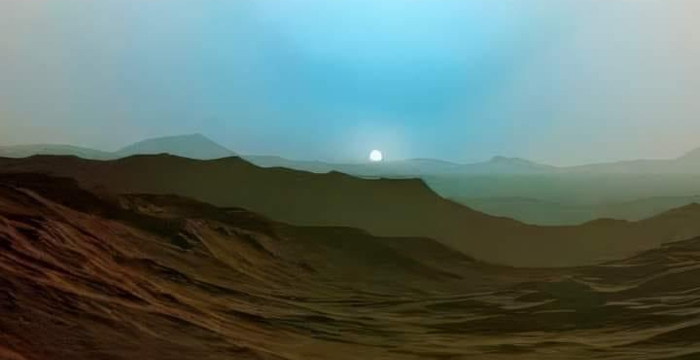
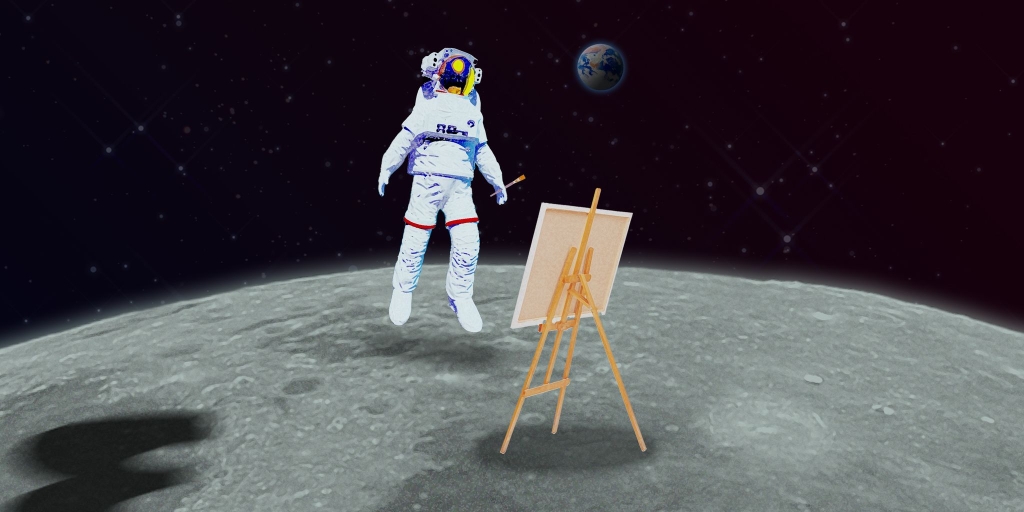
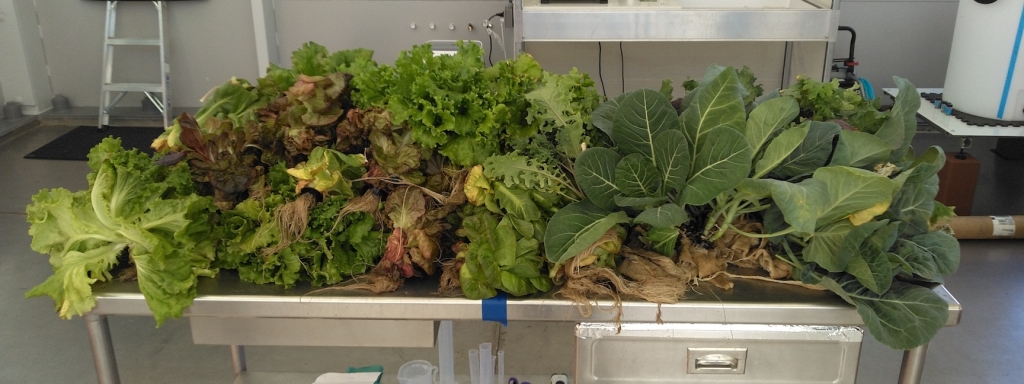
 There are times when a narrative is a necessary companion to a photo. There are times when a photo is worth a thousand words. And then there are times when you scratch your head and wonder …
There are times when a narrative is a necessary companion to a photo. There are times when a photo is worth a thousand words. And then there are times when you scratch your head and wonder …